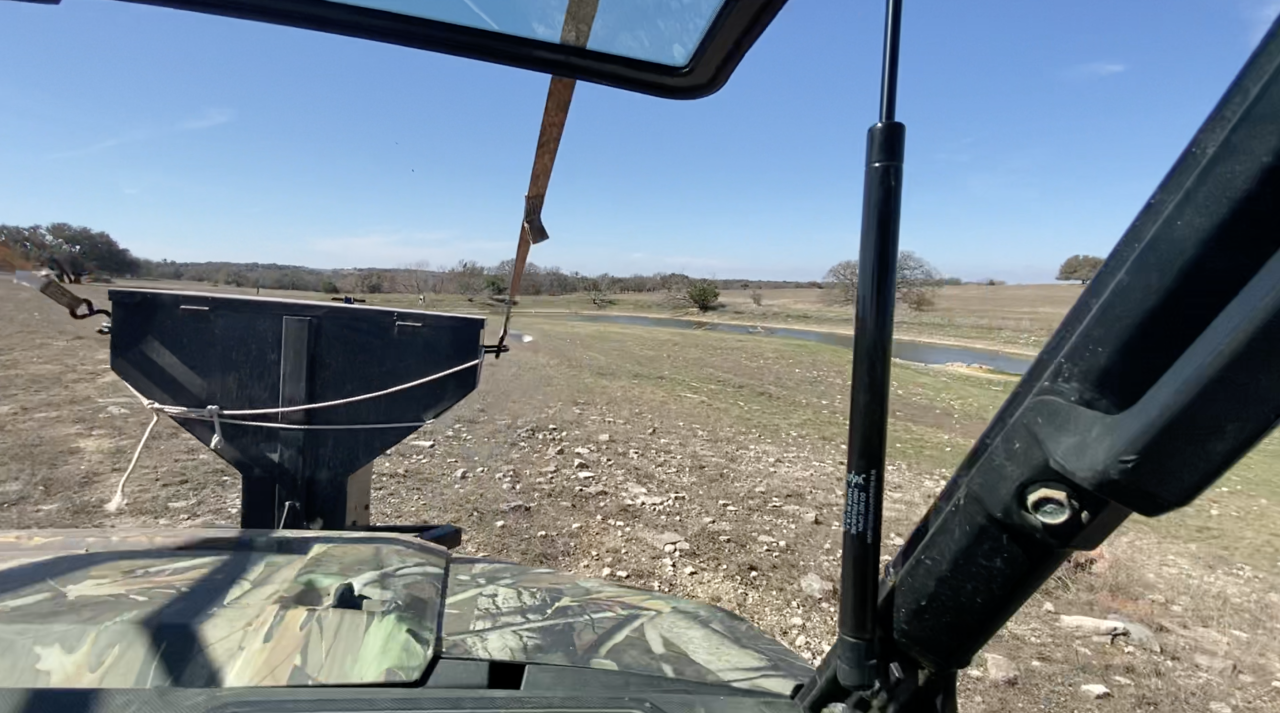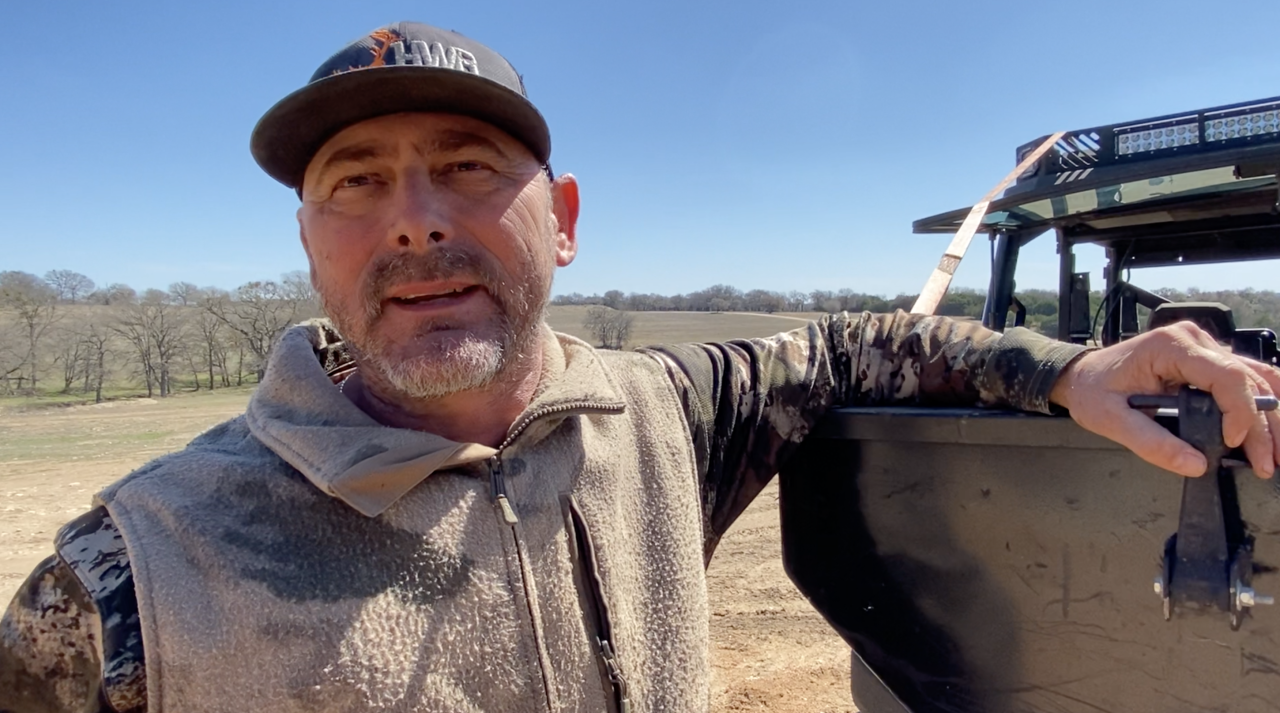WACO, TX — The Exotic Game Ranching is still calculating the losses suffered from February's unprecedented string of storms, according to Charly Seale of the Exotic Wildlife Association.
"We sent out a mortality survey, and lots of them are still coming back in," Seale said. "We don't have a perfect handle yet, but in what we're talking about, it's going to be at least $250 million to $350 million in losses."
Weather conditions to kick off the month of March in Central Texas are a far cry from the extreme conditions Texans endured in February, when some places saw temperatures below freezing for more than 200 straight hours.
According to Seale, the conditions outside don't reflect upon the impact still being felt, and in some instances growing, with herd populations on some exotic game ranches.
"Just because we got 80 degree temperatures doesn't mean these animals aren't still dying, they got pneumonia now." Exotic Game Ranching has deep ties to Texas ranching and culture, Seale explained.

The business of buying, breeding, selling and hunting exotic game has boomed to an industry that brings in $2 billion annually to the state of Texas. He said it's an industry picked up in the 1950s and has blossomed over the decades to include 130 species of exotic animals.
"It was a means for the ranchers that literally saved their ranches in many cases because the traditional livestock markets fluctuated," he said. "The icons in this industry such as Charlie Schreiner III of the famed Y.O. Schreiner ranch, got the idea that these animals like the climate. If you've been to South Africa...how the climate is almost identical was unprecedented."
In the early 1950s, the San Antonio Zoo curator suggested that Schreiner of the Y.O. ranch take on a surplus of animals to see how they adapt, according to yoschreiner.com. What started as a breeding effort for conservation purposes ultimately turned into a cash flow source as the exotic animals for the ranch, as hunting exotics became one of the primary sources of revenue for the ailing ranch during drought years.
As soon as 1953, Blackbuck Antelope, Sika Deer, Fallow Deer and Auodad Sheep were introduced to the wilderness of the YO. They successfully acclimated to the terrain and were soon followed by axis deer. - yoschreiner.com
But while exotic animals such as Blackbuck Antelope or Axis Deer can thrive in the Central Texas climate, February's unprecedented winter storms took a devastating toll on the herd populations, which were unequipped to survive amid the extreme cold.
"The horned oryxe and the super exotics that I had fared very well," Charles Seale said in explaining the impact of February's winter storms on his animals. "Meanwhile the axis and black buck were stacking up in pens next to them." - Charly Seale, Executive Director of Exotic Wildlife Foundation
"As an example, I'm going to use Axis right now," he said. "A lot of those species were having their babies right now, and those babies lost. So it was either immediate death or they died while they were in the womb, so that's going to affect us two or three years down the road."
Exotic game ranching is, for the most part, unregulated.
In a phone call placed to the Texas Parks and Wildlife press team, 25 News was told by a TPWD spokesperson that they don't keep a count on the number of exotic animal deaths in the state. However, TWPD is encouraging the public to report observations on the Inaturalist for biologists to study the impact of February's winter storms. There, you can view observations of specific animals such as Axis deer.
One post, observed Feb. 28 and submitted on March 2, shows several dead Axis deer photos.
The notes with the observation read: "37 Axis dead on private property after the winter storm. 9 more dead on an adjacent property There are approximately 15 survivors from this herd."
A February press release from TPWD states that while the department has regulatory authoring regarding the management of exotic species, the cold weather did significantly impact these species.
Seale told The Washington Post he lost 85 Axis deer on his ranch in the Hill County.
"I wish I could show you my pictures," Seale said. "Remember, this is the livelihood of some 14,000 of those people."

25 news put out a call to several Exotic Game Ranches where hunting is provided in Central Texas.
In a phone call with a ranch manager in Falls County on Wednesday, 25 News was told the effects of the winter storm are "absolutely unprecedented," and there have been examples of entire herds of axis deer being wiped out on neighboring ranches. However, the manager said he would not like to be interviewed.
Another rancher in McLennan County said he experienced no losses during the storm. He said he believes his populations fared better than others due to the abundance of cedar trees he has on his property, which provided cover to the animals during the winter blast.
According to Seale, the survival of the animals during the storm had a lot to do with terrain and the fact these animals just aren't equipped for that weather.
"You know, you can do everything right and still lose your animals," he said.

In the hopes of receiving permission to film on the property of an exotic ranch in the Central Texas area, 25 News was able to speak with the owner and manager of the Hensel Whitetail Ranch in Coryell County near Gatesville.
While the Hensel Whitetail Ranch was able to avoid some of the before-mentioned impacts of February's winter storms, the owner said at least one of their animals died, and he'd heard examples of others in the industry experiencing a heavy toll on some of their animals.
"We got lucky," Hensel said. "We didn't lose any other than one animal. But yeah there's other that got devastated."

When asked if they did anything differently than others during February's winter storms that allowed their animals to survive, Hensel said no.
"We got really, really lucky."
Bobby Grieger is a manager on the property in Gatesville County. He said he's been managing the herds at the ranch for three years, and they have several species of animals.
"We have Axis, Oryxe, Black Buck, Scimbox, Gemsbok, Fallow..." Grieger said. "On this place we probably have 200 to 250 animals."
During February's winter storms, Grieger said he was forced to physically break ice at ponds on the ranch to provide the animals with water.

"We were making sure they had water everyday," he said. "Whether it was on a creek or a pond, you had to physically go and break ice. The water in the tanks here had ice 4 to 6 inches thick some days."
Grieger said the animals were primarily after the food and the warmth amid the wintry chaos.
"I probably put out eight tons of alfalfa, corn, and protein everyday,' Grieger said. "We were just really lucky."

According to Grieger, the challenge in keeping the animals healthy amid the storm also lies in the fact that they're wild animals.
"At the end of the day, these are wild animals," he explained. "Just because we're putting hay out trying to give them bed, doesn't mean they're going to go that bed, they're not just going to come up and eat food, or warm up in the house."
Seale said he's still trying to find opportunities for the industry to receive financial aid amid the impact of February's winter storm.

"We found out from Senator Cornyn's office at least the USDA does cover the Axis deer," he explained. "We're still working with them to see if we can't get some funding for some of the antelope species."
And he's asking the public to contact their representatives in state government.
"If they care truly about conservation and that's what this is, you know in many instance, we have more animals here than in their native lands," he explained. "We're asking them to contact their representatives, their legislators and urge them to include some of these other exotic livestock in this indemnification program."



